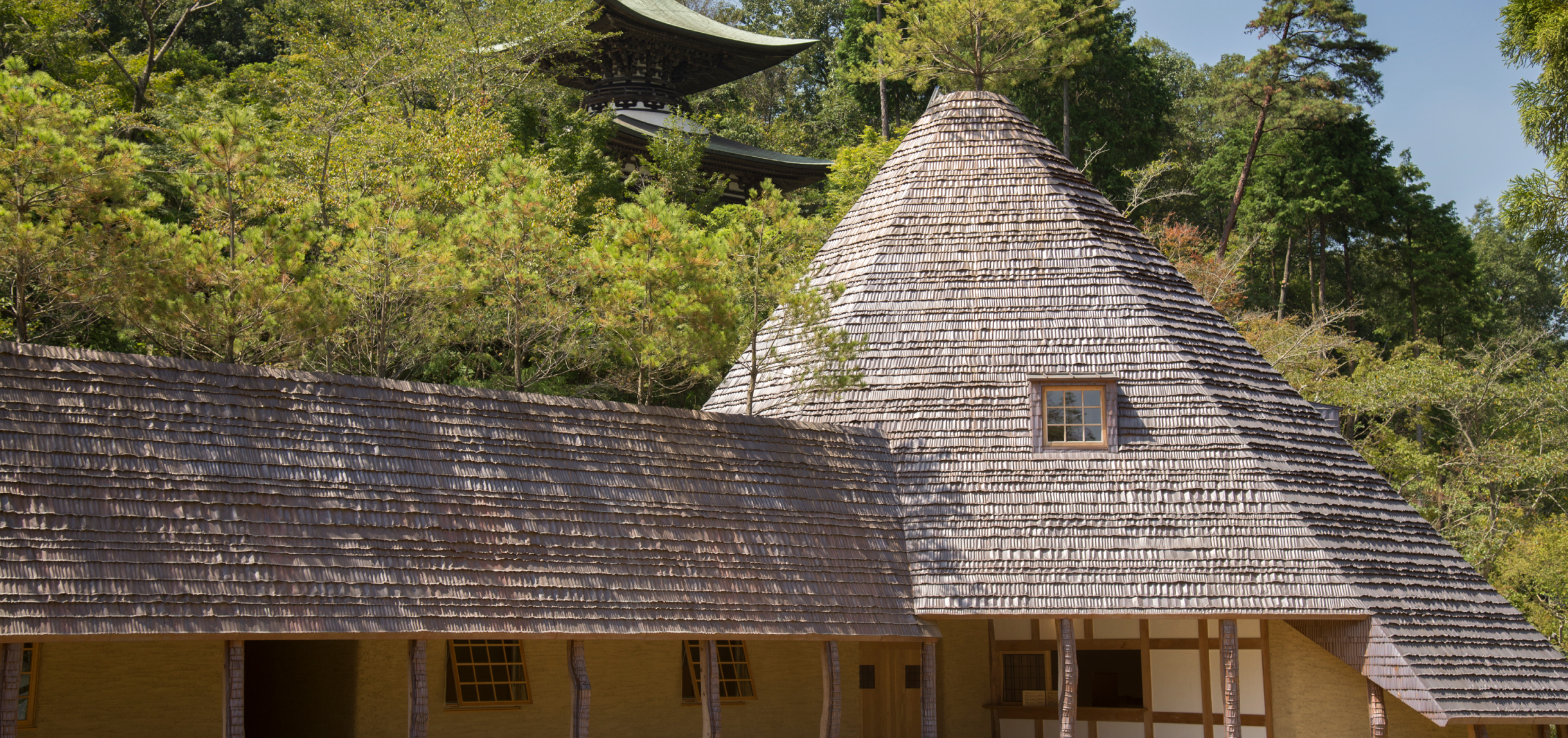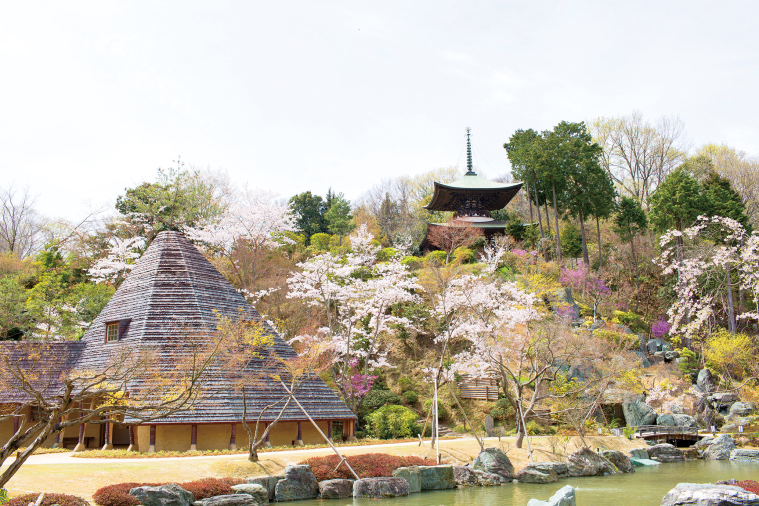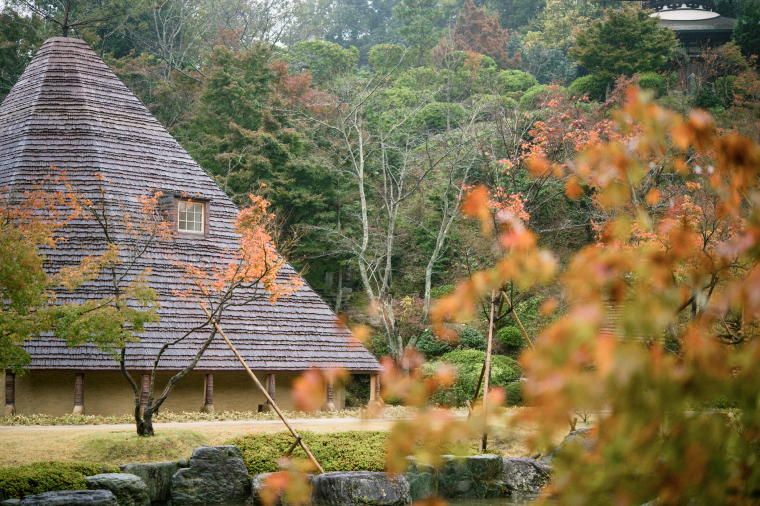
EXPLORE
ARCHITECTURE
Shodo
The reception desk is located at the Temple Office.
The Temple Office was designed and built by Terunobu Fujimori to be a symbol of Shinshoji Zen Museum and Gardens.
About Shodo
【 Shodo (Pine Hall) Design Statement 】
When first visiting this area, the Japanese red pines caught my attention. The Sanyodo (southern mountain region) and Seto Inland Sea are some of the foremost Japanese red pine areas in the country.
While there are various trees in Japan, the one the most closely associated with Zen is probably the pine. The image of an old tree that withstands the cold wind to grow on the top of a rocky mountain comes to mind.
Pines are an appropriate theme for the Temple Office, which is the first building visitors encounter after entering Shinshoji Zen Museum and Gardens.
After deciding on the name "Shodo" (Pine Hall), everything else came quickly. Attempting to evoke an old pine tree on a rocky mountain, a pine tree from a nearby mountain was planted on top of the slanted roof thatched with hand-bent copperplates.
The surfaces of pine tree logs taken from a nearby mountain were shaved, and they were then installed as corridor pillars. The logs were lined up in a way that made use of their gentle curves, which are unique to natural wood.
It was my aim to craft a building that has a clearly defined character yet blends into its surroundings.


Terunobu Fujimori
Architect, architectural historian, specially appointed professor at Kogakuin University, professor emeritus at the University of Tokyo, and Doctor of Engineering.
Born in 1946 in Nagano prefecture. After completing a doctoral program in architecture at the University of Tokyo, he served as a professor at the University of Tokyo's Institute of Industrial Science and Kogakuin University's Faculty of Architecture. He has numerous works to his name. They include "Akasegawa Genpei's Residence (Nira [Leek] House)" (winner of the 1997 Japan Art Award), "Kumamoto Architectural College's Student Dormitory" (winner of the Architectural Institute of Japan's 2001 Prize of AIJ for Design), and "Stork House" (in Raiding, Austria; winner of the Austrian Tourism Innovation Prize 2014). He is the author of many books on architectural history. He won the 1986 Japan Inter-Design Award for the research activities of the Tokyo Architectural Detectives and Roadway Observation Society (An Introduction to Street Observation [Rojo kansatsu gaku nyumon], Adventures of an Architectural Detective: Tokyo [Kenchiku tantei no boken Tokyo hen], etc.), and the Prize of AIJ 1998 (Research Theses Division) for his work on architecture and urbanism in the modern age of Japan (Meiji Tokyo Design [Meiji no Tokyo keikaku], Japan's Modern Architecture [Nihon no kindai kenchiku] vol. 1 & 2, etc.)